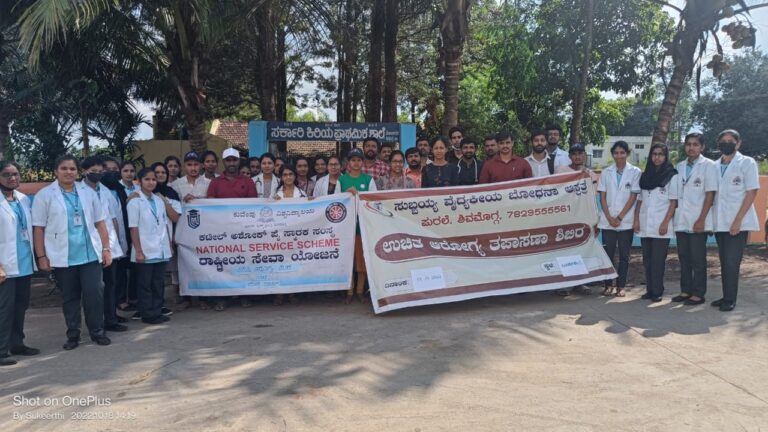
“ಯಾರನ್ನು ಅವರ ಕೊಳಕು ಪಾದಗಳಿಂದ ನನ್ನ ಮನಸ್ಸಿನಲ್ಲಿ ನಡೆಯಲು ಬಿಡುವುದಿಲ್ಲ”. ಇದು 20ನೇ ಶತಮಾನದ ಮಹಾ ಮಾನವತಾಪುರುಷನ ಮನದಾಳದ ಮಾತು ಸ್ವಚ್ಛತೆ ಮತ್ತು ನೈರ್ಮಲ್ಯಕ್ಕೆ ಅವರು ಕೊಟ್ಟ ಪ್ರಾಶಸ್ತ್ಯವೇನು? ಮಹತ್ವವೇನು? ಎಂಬುದಕ್ಕೆ ಕನ್ನಡಿ. ಅವರು ಮತ್ತಾರು ಅಲ್ಲ, ಅವರೇ ನಮ್ಮ ರಾಷ್ಟ್ರಪಿತ ಗಾಂಧೀಜಿ. ಸ್ವಾತಂತ್ರ್ಯಕ್ಕಿಂತ ನೈರ್ಮಲ್ಯ ಮುಖ್ಯ ಅದು ಜೀವನದ ಅವಿಭಾಜ್ಯ ಅಂಗ ಎಂದೇ ನಂಬಿದ್ದ ಮಹಾನ್ ಚೇತನ. ಸ್ವಚ್ಛತೆ ಮತ್ತು ನೈರ್ಮಲ್ಯವನ್ನು ಕಾಪಾಡುವಲ್ಲಿ ಯುವಶಕ್ತಿ ಎಂದು ಕರೆಸಿಕೊಳ್ಳುವ ಯುವಜನರ ಪಾತ್ರ ಬಹಳ ದೊಡ್ಡದು ಆಗ ಮಾತ್ರ ನನ್ನ ಭಾರತ ಮಹಾನ್ ಭಾರತವಾಗಲು ಸಾಧ್ಯ!!!..
ಸ್ವಚ್ಛತೆ ಮತ್ತು ನೈರ್ಮಲ್ಯತೆಯನ್ನು ಕಾಪಾಡುವಲ್ಲಿ ಯುವಕರ ಪಾತ್ರ ಏನು? ಎಂದು ತಿಳಿಯುವ ಮೊದಲು ಅವುಗಳ ಅರ್ಥವನ್ನು ನೋಡುವುದಾದರೆ ಸ್ವಚ್ಛತೆ ಎಂಬುದು ನಮ್ಮನ್ನು ಮತ್ತು ನಮ್ಮ ಸುತ್ತಲಿನ ಪರಿಸರವನ್ನು ಸ್ವಚ್ಛ ಮಾಡಬೇಕು ಎಂದು ಸೂಚಿಸಿದರೆ ನೈರ್ಮಲ್ಯತೆಯು ಆ ಸ್ವಚ್ಛತೆಯನ್ನ ಹೇಗೆ ಪ್ರತಿನಿತ್ಯವೂ ಕಾಪಾಡುವುದು ಅಥವಾ ಪ್ರತಿನಿತ್ಯ ಸ್ವಚ್ಛವಾಗಿರುವುದೇ ನೈರ್ಮಲ್ಯತೆ. ಸ್ವಚ್ಛತೆ ಮತ್ತು ನೈರ್ಮಲ್ಯತೆ ಒಂದೇ ನಾಣ್ಯದ ಎರಡು ಮುಖಗಳು.
ಸ್ವಚ್ಛತೆ ಮತ್ತು ನೈರ್ಮಲ್ಯ ಕಾಪಾಡುವುದು ಈಗ ಒಂದು ದೊಡ್ಡಸವಾಲಾಗಿದೆ . ಕೈಗಾರಿಕರಣ, ನಗರೀಕರಣ, ಔದ್ಯೋಗಿಕರಣ ಎಂಬ ಬೆನ್ನು ಬಿದ್ದ ನಾವು ಅಲೆಕ್ಸಾಂಡರ್ ಎಂಬಾತ ಕಂಡುಹಿಡಿದ ಪ್ಲಾಸ್ಟಿಕ್ ನ ಬಲೆಗೆ ಬಿದ್ದೆವು. ಅದು ಎಷ್ಟು ನಮ್ಮ ಬದುಕಿಗೆ ಜೊತೆ ಆಯ್ತು? ಎಂದು ಎಲ್ಲರಿಗೂ ಗೊತ್ತು. ಪ್ಲಾಸ್ಟಿಕ್ ಇಂದು ಪೆಡಂಭೂತದಂತೆ ನಮ್ಮ ಬೆನ್ನು ಹತ್ತಿದೆ. ಇದಕ್ಕೆ ಮುಕ್ತಿ ಕೊಡಲು ಒಂದೇ ಬಾರಿಗೆ ಸಾಧ್ಯವಿಲ್ಲ ಎಂಬುದು ಕಟುವಾದ ಸತ್ಯ. ಇದು ಅನೇಕ ರೀತಿಯ ಮಾಲಿನ್ಯಕ್ಕು ತನ್ನ ಕೊಡುಗೆಯನ್ನು ನೀಡಿದೆ. ಸಕಲರು ಸ್ವಲ್ಪ ಕ್ಷಣವು ಬಿಟ್ಟಿರಲಾರದ ‘ಗಾಳಿ’ , ನೂರು ಜನ ಪ್ರೀತಿ ಇಲ್ಲದೆ ಇರಬಹುದು ಆದರೆ ಒಬ್ಬರು ನೀರಿಲ್ಲದೆ ಇರಲಾರರು ಅಂತಹ ಪವಿತ್ರವಾದ ನೀರು ಇಂದು ಅಸ್ವಚ್ಛತೆಯಿಂದ ಇರುವುದು ಸಹಿಸಲಾಗದ ನೋವು .”ಜನನಕ್ಕೆ ಕಾರಣ ,ಜೀವನಕ್ಕೆ ಚೇತನವಾಗಿರುವ ಭೂಮಿಯು ಇಂದು ಅಸ್ವಚತೆ ಅನೈರ್ಮಲ್ಯಕರಣಕ್ಕೆ ತುತ್ತಾಗಿರುವುದು ವಿಪರ್ಯಾಸವೇ ಸರಿ!!! ಇವೆಲ್ಲವೂ ಮಾನವನ ಉತ್ತಮ ಸಮಾಜಕ್ಕೆ ಯಮವೇ ಎಂದು ಹೇಳಿದರೆ ತಪ್ಪಾಗಲಾರದು.
ಇ – ವೇಸ್ಟ್ ಕೂಡ ಈಗಿನ ಅಸ್ವಚ್ಛತೆಯ ಒಂದು ಭಾಗವಾಗಿದೆ. ಎಲ್ಲವೂ ಕೂಡ ತನ್ನ ಬೆರಳ ತುದಿಯಲ್ಲೇ ಆಗಬೇಕು ಎಂಬ ದುರಾಸೆಯ ಮಾನವ ತನ್ನ ಬುಡಕ್ಕೆ ತಾನೇ ಕೊಡಲಿ ಪೆಟ್ಟು ಹಾಕಿಕೊಳ್ಳುತ್ತಿದ್ದಾನೆ. ಇ- ವೆಸ್ಟ್ ಗಳಾದ ಮೊಬೈಲ್ಗಳ ಹಾಳಾದ ಪರಿಕರ ,ಕಂಪ್ಯೂಟರ್ಗಳ ಭಾಗ ಇತ್ಯಾದಿ. ಇವು ಮಣ್ಣಿನಲ್ಲಿ ಬೇಗ ಕರಗದ ವಸ್ತುಗಳಾಗಿರುವುದರಿಂದ ಅಸ್ವಚ್ಛತೆ ಅನೈರ್ಮಲ್ಯೀಕರಣಕ್ಕೆ ಕಾರಣವಾಗಿದೆ. ಇವು ಕೂಡ ಪರಿಸರಕ್ಕೆ ಕಂಟಕವೇ…..
ಇವನ್ನೆಲ್ಲ ತಡೆಗಟ್ಟಬೇಕೆಂದರೆ ಯುವ ಜನತೆ ಎಚ್ಚೆತ್ತುಕೊಳ್ಳಬೇಕು .”ಸ್ವಚ್ಚವಾದ, ನೈರ್ಮಲ್ಯವಾದ ,ಭಾರತವನ್ನು ಕಟ್ಟಲು ಇಟ್ಟಿಗೆ ಮಣ್ಣಿನಿಂದ ಸಾಧ್ಯವಿಲ್ಲ ಅದು ಸಾಧ್ಯವಾಗುವುದು ಬಿಸಿ ರಕ್ತ ಮಾಂಸಗಳಿಂದ ಕೂಡಿದ ಒಂದು ಬಲಿಷ್ಠ ಶಕ್ತಿ ಎಂದು ಕರೆಸಿಕೊಳ್ಳುವ ಯುವಕ ಯುವತಿಯರಿಂದ”. ಭಾರತದಂತಹ ರಾಷ್ಟ್ರಕಂತು ಇದು ಬಹು ಸುಲಭ ಇಡೀ ಜಗತ್ತಿಗೆ ಯುವಶಕ್ತಿಯನ್ನು ಪರಿಚಯಿಸಿದ, ಅತ್ಯಂತ ಬೃಹತ್ತಾದ ಯುವಶಕ್ತಿ ಹೊಂದಿರುವ ನಾವು ನಮ್ಮನ್ನು ಹೇಗೆ ಸ್ವಚ್ಛವಾಗಿರಿಸಿಕೊಳ್ಳುತ್ತೇವೆಯೋ ಹಾಗೆಯೇ ನಮ್ಮ ಸುತ್ತಲಿನ ಪರಿಸರವನ್ನು ಸ್ವಚ್ಛವಾಗಿ, ನೈರ್ಮಲ್ಯವಾಗಿ ಇಡಬೇಕು. ಪ್ರಕೃತಿಯ ಕೂಸಾಗಿರುವ ನಾವು ನಮ್ಮ ಅಮ್ಮನನ್ನು ನೋಡಿಕೊಳ್ಳುವ ರೀತಿಯಲ್ಲಿ ಪರಿಸರ ಅಂದರೆ ಸಮಾಜವನ್ನು ನೋಡಿಕೊಳ್ಳಬೇಕು. ಇದು ಜವಾಬ್ದಾರಿಯು ಹೌದು…. ಕರ್ತವ್ಯವೂ ಹೌದು….
ಸ್ವಚ್ಛತೆ ಮತ್ತು ನೈರ್ಮಲ್ಯ ಕಾಪಾಡಲು ಯುವಕರು ತಮ್ಮ ಪಾತ್ರವನ್ನು ಕೆಲವೊಂದು ಕಾರ್ಯಕ್ರಮಗಳನ್ನು ಹಮ್ಮಿಕೊಳ್ಳುವುದರ ಮೂಲಕ ಮಾಡಬಹುದು ಅವುಗಳೆಂದರೆ:
೧. ತಮ್ಮನ್ನು ತಾವು ಸ್ವಚ್ಚವಾಗಿಟ್ಟುಕೊಳ್ಳುವುದು ಮತ್ತು ತಮ್ಮ ಸುತ್ತಮುತ್ತಲಿನ ಪರಿಸರವನ್ನು ಪ್ರತಿನಿತ್ಯ ಸ್ವಚ್ಛವಾಗಿರುವಂತೆ ಮಾಡುವುದು.
೨. ಸ್ವಚ್ಛತೆಗೆ ಸಂಬಂಧಿಸಿದಂತೆ ಎಲ್ಲರಿಗೂ ಅರ್ಥವಾಗುವಂತೆ ಬೀದಿ ನಾಟಕಗಳನ್ನು ಮಾಡುವುದು.
೩. ಯುವಕ, ಯುವತಿಯರೆಲ್ಲ ಸೇರಿ ಸ್ವಚ್ಛತೆ ಪ್ರಾಮುಖ್ಯತೆಯ ಕುರಿತು ಜನಸಾಮಾನ್ಯರಿಗೆ ತಿಳಿಸುವುದು.
೪. ಸ್ವಚ್ಛತೆ ಮತ್ತು ನೈರ್ಮಲ್ಯಕರಣಕ್ಕೆ ಸಂಬಂಧಿಸಿದ ಹಾಡುಗಳನ್ನು ಹಾಡುವುದು.
೫. ಭಿತ್ತಿಪತ್ರ , ಗೋಡೆ ಬರಹಗಳನ್ನು ಸ್ವಚ್ಛತೆಗೆ ಸಂಬಂಧಿಸಿದಂತೆ ಬರೆಯುವುದು. ಇತ್ಯಾದಿ…
ವಿಷಾದನೀಯವೆಂದರೆ ಇಂದು ಯುವಕ ಯುವತಿಯರು ಹೆಚ್ಚಿನ ಸಮಯವನ್ನು ಸಾಮಾಜಿಕ ಜಾಲತಾಣಗಳಲ್ಲಿ ಕಳೆಯುತ್ತಿದ್ದಾರೆ. ಅಂತವರು ತಮ್ಮ ಕರ್ತವ್ಯವನ್ನು ಅರಿತು ಸಾಮಾಜಿಕ ಜಾಲತಾಣದಲ್ಲೇ ಸ್ವಚ್ಛತೆ, ನೈರ್ಮಲ್ಯತೆಯ ಕುರಿತು ಪೋಸ್ಟರ್ ಗಳನ್ನು ಬಿಡಬೇಕು. ಇದರಿಂದ ಕೂಡ ಸ್ವಚ್ಛತೆ ಮತ್ತು ನೈರ್ಮಲ್ಯ ಕಾಪಾಡಲು ತಮ್ಮ ಪಾತ್ರವನ್ನು ವಹಿಸಿದಂತಾಗುತ್ತದೆ.
ಇದರೊಂದಿಗೆ ಯುವಕರು ಸರ್ಕಾರಕ್ಕೂ ಇದರ ಬಗ್ಗೆ ಅರಿವು ಮೂಡಿಸಿ, ಸರ್ಕಾರಕ್ಕೆ ತಮ್ಮ ಸಲಹೆಯನ್ನು ನೀಡಿ ಅದು ಜಾರಿಯಾಗುವಂತೆ ಮಾಡಬೇಕು .ನನ್ನ ಪ್ರಕಾರ ಸರ್ಕಾರಕ್ಕೆ ಯುವಜನತೆ ಕೊಡಬಹುದಾದ ಸಲಹೆಗಳೆಂದರೆ:
೧. ಪ್ರತಿ ಗ್ರಾಮ ಪಂಚಾಯಿತಿ ಪಟ್ಟಣ ಪಂಚಾಯಿತಿ ವ್ಯಾಪ್ತಿಯಲ್ಲಿ ಬರುವ ಮನೆಗಳಿಗೆ ಕಸದ ಬುಟ್ಟಿ ಕೊಟ್ಟು. ಹಸಿಕಸ , ಒಣಕಸ ಬೇರ್ಪಡಿಸಲು ಹೇಳಿ ಬೇರೆ ಮಾಡದಿದ್ದರೆ ಆಗುವ ತೊಂದರೆಯ ಬಗ್ಗೆ ಅರಿವು ಮೂಡಿಸಿ ಕಸಗಳನ್ನು ಸರಿಯಾದ ರೀತಿ ವಿಲೇವಾರಿ ಮಾಡಲು ತಿಳಿಸಬೇಕು. ಇದರೊಂದಿಗೆ ಯುವಕರ ಸಹಾಯವು ಇದೆ ಎಂದು ಹಸ್ತ ಚಾಚಬೇಕು.
೨. ಶಾಲಾ ಮಕ್ಕಳಿಗೆ ಅರಿವು ಮೂಡಿಸಲು ವಿವಿಧ ಸ್ಪರ್ಧೆಗಳನ್ನು ಆಯೋಜಿಸಬೇಕು.
೩. ಚರಂಡಿ ನೀರನ್ನು ಸರಿಯಾದ ರೀತಿಯಲ್ಲಿ ಹೋಗುವಂತೆ ಮಾಡಬೇಕು. ಪ್ರತಿ ಬೀದಿಗೂ ಅದರ ಉದ್ದದ ಅನುಗುಣವಾಗಿ ಕಸದ ಬುಟ್ಟಿಗಳನ್ನು ಇರಿಸಬೇಕು.
೪. ಪರಿಸರದ ಅಥವಾ ಸಮಾಜದ ಸ್ವಚ್ಛತೆ ನೈರ್ಮಲ್ಯಕರಣಕ್ಕೆ ಅಡ್ಡಿಯಾಗಿರುವ ಪ್ಲಾಸ್ಟಿಕ್ ಅನ್ನು ಬ್ಯಾನ್ ಮಾಡಬೇಕು.
೫. ಕೈಗಾರಿಕೆಯಿಂದ ಅಥವಾ ಇನ್ಯಾವುದೇ ರೀತಿಯಿಂದ ನೀರಿನ ಮೂಲಗಳಿಗೆ ತ್ಯಾಜ್ಯಗಳನ್ನು ಹೋಗದಂತೆ ಮಾಡಬೇಕು.
೬. ಅತ್ಯಂತ ಹೊಗೆ ಬೀರುವ ಗಾಡಿ, ಕೈಗಾರಿಕೆಗಳನ್ನು ಅತ್ಯಂತ ಕಮ್ಮಿ ಮಾಡಬೇಕು.
ಹೀಗೆ ಯುವಜನತೆ ಸರ್ಕಾರಕ್ಕೆ ಸಲಹೆ ನೀಡಿ ತಮ್ಮ ಪಾತ್ರವನ್ನು ನಿರ್ವಹಿಸಬೇಕು. ಇದನ್ನು ಕೇವಲ ಒಂದು ವಾರ ಒಂದು ತಿಂಗಳು ಮಾಡದೆ ಪ್ರತಿನಿತ್ಯ ತಮ್ಮ ಸಮಾಜವನ್ನು ನೈರ್ಮಲ್ಯವಾಗಿಡಲು ಪ್ರಯತ್ನಿಸಬೇಕು.
“ಆರೋಗ್ಯದ ಮೂಲವೇ ಸ್ವಚ್ಛತೆ ಮತ್ತು ನೈರ್ಮಲ್ಯ”. ಅತ್ಯಂತ ದೊಡ್ಡ ಸಂವಹನ ಮಾಧ್ಯಮ ಎಂದು ಕರೆಸಿಕೊಳ್ಳುವ ವಿದ್ಯಾರ್ಥಿಗಳು ,ಯುವ ಜನರು ಸ್ವಚ್ಛತೆ ಮತ್ತು ನೈರ್ಮಲ್ಯವಾದ ಸಮಾಜವನ್ನು ನಿರ್ಮಿಸಲು ತಮ್ಮ ದಾಪುಗಾಲನ್ನು ಹಾಕಬೇಕು. ಗಾಂಧಿ ಕಂಡ ಸ್ವಚ್ಛ ಭಾರತದ ಕನಸನ್ನು ನನಸು ಮಾಡಬೇಕು.”ಸ್ವಚ್ಛ ಮೇವ ಜಯತೇ” ಎಂದು ಜಗತ್ತಿಗೆಲ್ಲ ಸಾರಬೇಕು .ಇದರ ರುವಾರಿಗಳು ನಾವಾಗೋಣ ಸ್ವಚ್ಛವಾದ ನೈರ್ಮನ್ಯವಾದ ಸಮಾಜವನ್ನು ಕಟ್ಟೋಣ.
ಧನ್ಯವಾದಗಳು….
ಸಂಧ್ಯಾ ಕೆ. ಕೆ
ಪ್ರಥಮ ಬಿ.ಎ ವಿದ್ಯಾರ್ಥಿನಿ
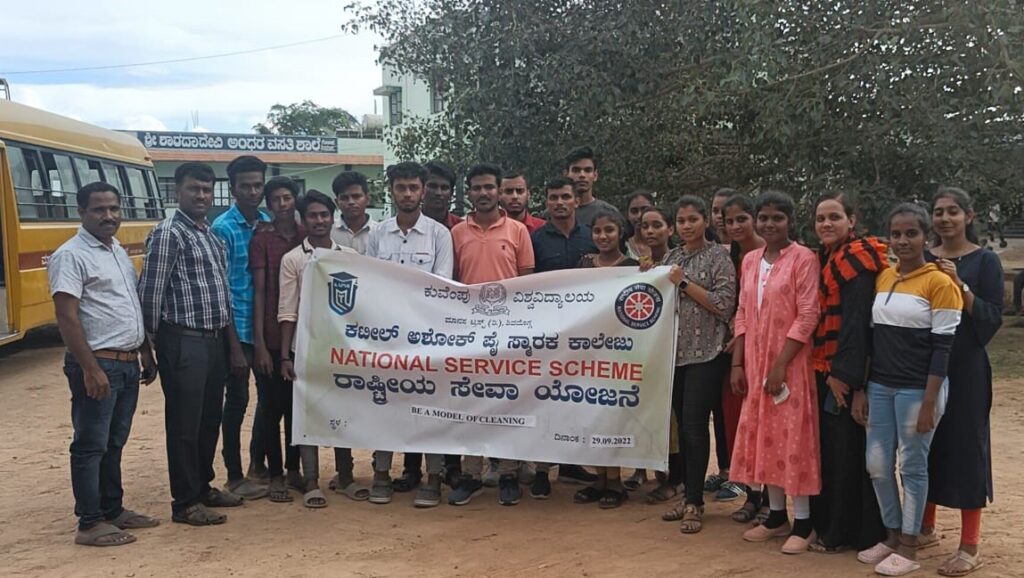


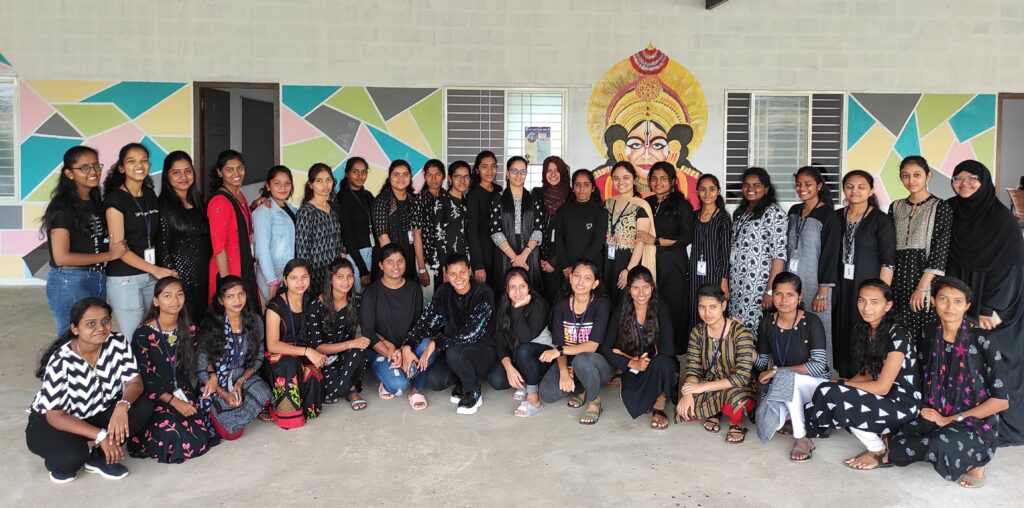
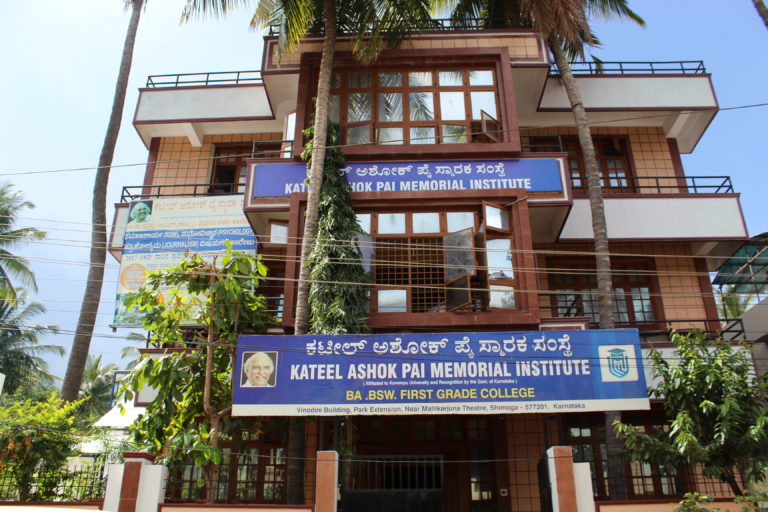
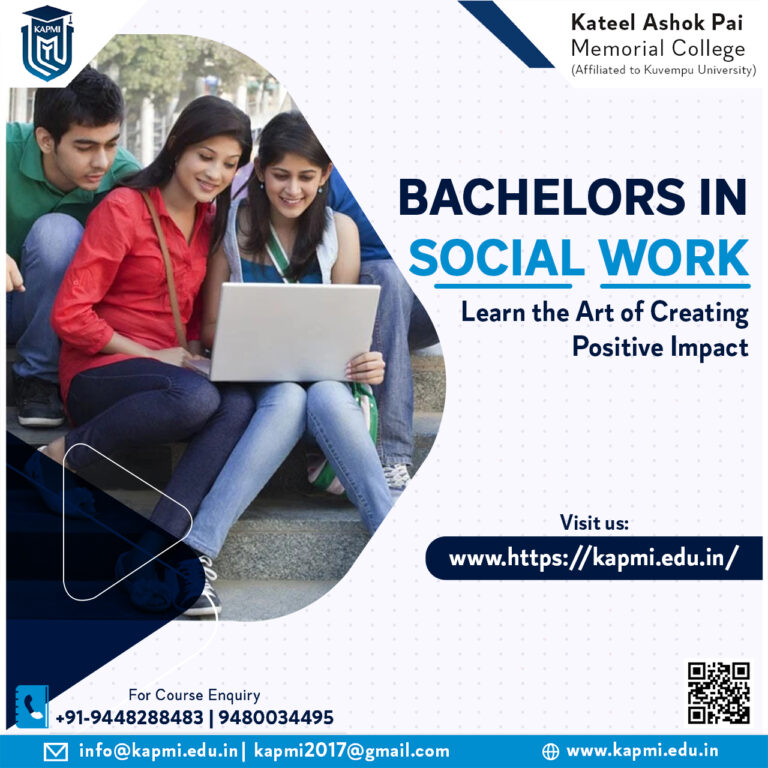

 ತ್ಯಾಗಮಹಿ ತಾಯಿ
ತ್ಯಾಗಮಹಿ ತಾಯಿ ನನ್ನ ಪಾಲಿಗೆ ದೇವರು ಅಂದರೆ ನನ್ನ ಅಮ್ಮ ಎಲ್ಲ ತೊಂದರೆಗಳಿಂದ ಪಾರುಮಾಡುತಾರೆ ಈ ನನ್ನ ಅಮ್ಮ 🤱🏻
ನನ್ನ ಪಾಲಿಗೆ ದೇವರು ಅಂದರೆ ನನ್ನ ಅಮ್ಮ ಎಲ್ಲ ತೊಂದರೆಗಳಿಂದ ಪಾರುಮಾಡುತಾರೆ ಈ ನನ್ನ ಅಮ್ಮ 🤱🏻 

